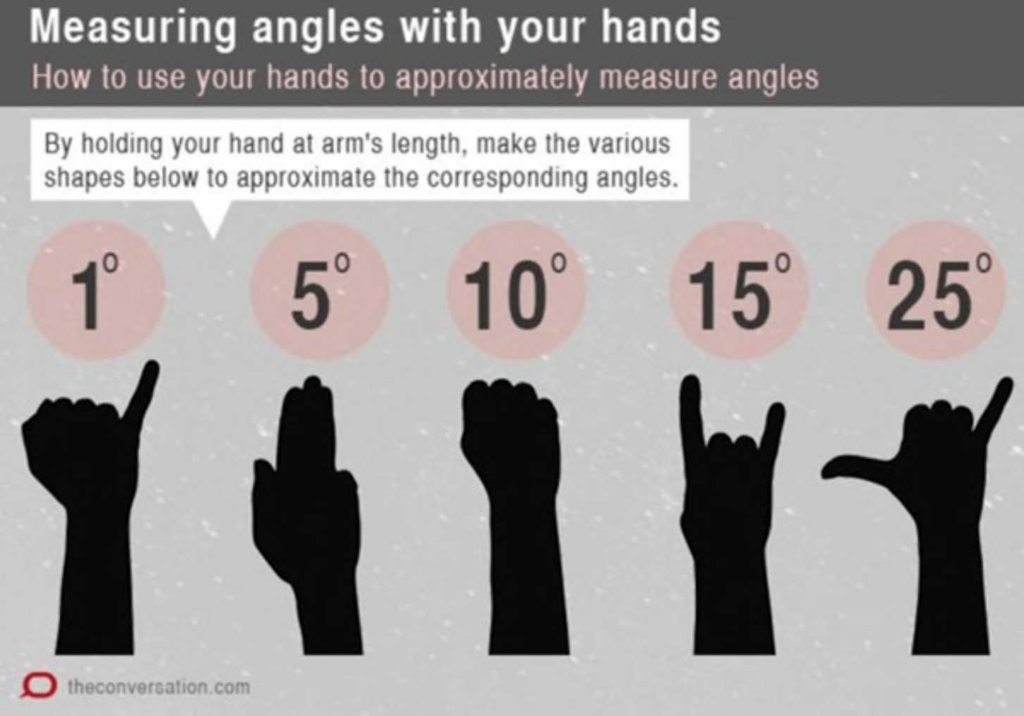Sky Report: June 26 – July 2, 2023

June ends with Venus brilliant and conspicuous low in the west in the early evening sky, but well before the end of July it will have disappeared. These are the final few weeks to see it in the evening, so enjoy it while you can.
Venus is on an orbit that’s inside the earth’s orbit, and it’s moving between the earth and sun, from left to right as you face the sun. It’s close to the earth, as planets go, (46 million miles on the 1st) so its motion in the sky is surprisingly rapid. Not blink and it’s gone, but in two weeks it goes from conspicuous to not there. Of course it still exists, and it reappears in the morning sky late in July.
Mars is a short distance to the upper left of Venus all week, and their separation changes little. They’re closest at 3° 34’ on the 3rd, and both will fit together in a pair of binoculars until perhaps the 15th, depending on your binoculars. At closest you shouldn’t be able to fit two fingers held at arm’s length between them. Mars is much fainter but it’s bright enough to see easily.
Also in the grouping is Regulus, the brightest star in Leo, and a star that is only slightly brighter than Mars. Mars has been approaching Regulus since forever and they’ll be closest next week, but note that Mars is midway between Venus and Regulus as this week ends.
Two other planets are visible tonight. Saturn rises at around midnight, and in the wee hours of the morning it’s low in the southeast as the brightest “star” in a large area of the sky; only the star Fomalhaut, 20° below Saturn, rivals it in brightness.
Jupiter rises almost 4 hours before the sun and sits low in the east in morning twilight. Its great brightness lets you easily see it in the pre-dawn sky.
On the evening of the 30th the nearly-full moon sits only 2½°, or five moon-diameters, above Antares, the brightest star in Scorpius, in the early evening. If you’re up all night this is a chance to watch the moon’s eastward motion in the sky as it orbits the earth and pass Antares. At 1 a.m. their separation has decreased to 1° and at 3 a.m. to ½°.
This might be a good time to review angular measure in the sky as I refer to angles constantly to express the apparent distances between celestial objects. The attached chart is a good summary. Because the sky is a hemisphere, the distance from the horizon to the zenith is 90°. Something that is a third of the way up the sky has an altitude of 30°; if half-way up the altitude is 45°. For smaller angles recall that one degree is divided into 60 arcminutes and each arcminute is divided into 60 arcseconds. The diameter of the moon is 30 arcminutes (30’) = ½°. The current diameter of Mars is 4 arcseconds (4”).
Stellar Vista Observatory provides portable telescopes and tripod mounted binocular kits on loan for free to residents and visitors in Kane County. Enhance your enjoyment of the night sky! To learn more, request a loan, or attend one of SVO’s free public star parties for 2023, visit https://stellarvistaobservatory.org/ or drop in to the Kane County Office of Tourism.






Comments are closed.